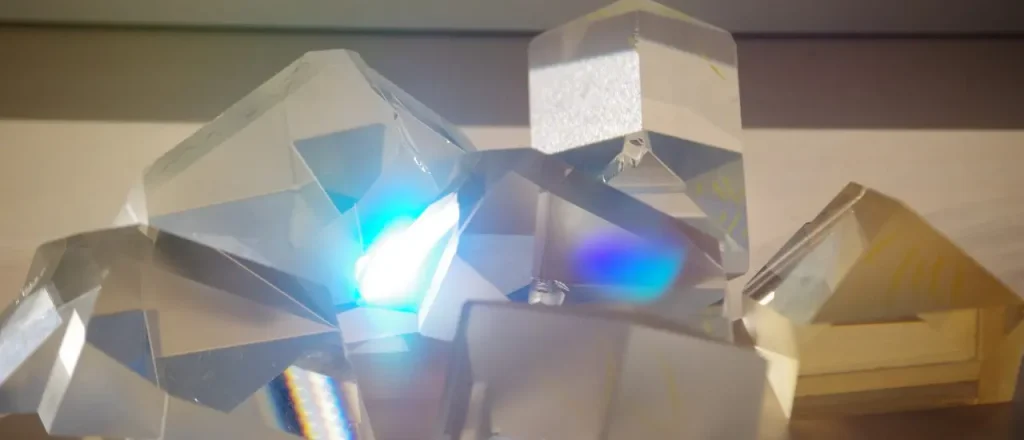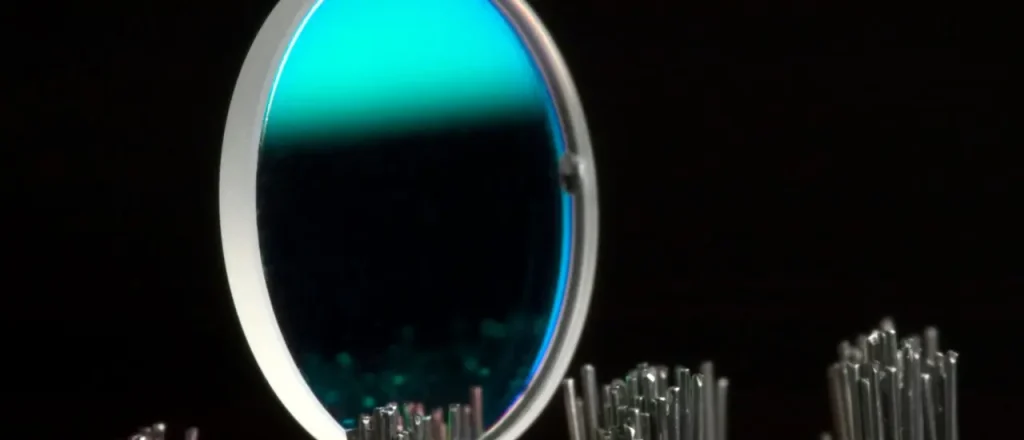Quartz Glass: Properties and Machining Challenges | Hard Yet Brittle?

Properties and Challenges of Quartz Glass
Quartz glass, as its name suggests, is a specialized type of glass primarily composed of quartz (silicon dioxide). It is manufactured by removing impurities to an extreme degree, resulting in very high transparency and excellent optical properties. This glass, made from quartz, has exceptional thermal and chemical resistance, playing a crucial role in various industries.
Properties of Quartz Glass

High Transmittance
Quartz glass is made from pure silicon, allowing it to transmit not only visible light but also infrared and ultraviolet rays. This high purity makes it a valuable material in fields such as optical filters and optical fibers.
Thermal Resistance
Quartz glass is less prone to thermal deformation and has a high softening point, making it suitable for use in high-temperature environments. Additionally, its low thermal expansion coefficient makes it resistant to cracking under sudden temperature changes. This thermal stability makes it particularly well-suited for high-temperature experiments and semiconductor manufacturing processes.
Chemical Resistance
Quartz glass is chemically stable and highly resistant to many chemicals. However, like other glasses, it is relatively susceptible to alkaline substances.
This chemical resistance is one reason it is widely used in chemical experiments.
Applications of Quartz Glass

Quartz glass is used in a variety of applications due to its unique properties:
Optical Filters
In optical filters, quartz glass selectively transmits specific wavelengths of light. This selectivity is crucial for precise measurements in scientific research and diagnostic equipment in medical technology. For example, filters can be customized to block ultraviolet light while allowing visible light to pass through.
Laboratory Chemical Equipment
The thermal and chemical resistance of quartz glass ensures reliable performance under harsh experimental conditions. In experiments involving chemical reactions or high-temperature processing, containers and tools must withstand high temperatures and strong acids or bases. Quartz glass equipment maintains its performance, ensuring reproducibility of accurate experimental results.
Semiconductor Components
As components in semiconductor devices, the high-temperature stability and chemical resistance of quartz glass support the precision and efficiency of manufacturing processes. In semiconductor chip manufacturing, extremely fine structures must be formed accurately, and components must be protected from chemical substances and high temperatures. Quartz glass components maintain their performance under these harsh conditions, improving both precision and efficiency in semiconductor manufacturing.
Optical Fibers
In optical fibers, the high transmittance and low light loss of quartz glass are crucial. These properties enable efficient and high-speed data communication, which is essential for internet and communication networks. By transmitting data as light signals over long distances, signal degradation can be minimized.
Challenges in Processing Quartz Glass
Brittleness
The brittleness of quartz glass makes it difficult to process. Although it is very hard, this also makes it prone to cracking. Especially during precise cutting or drilling, fine cracks can occur, leading to damage.
High Precision Requirements
The processing of quartz glass often requires extreme precision. In applications involving optical instruments like lenses or prisms, even minor errors in processing can significantly affect optical performance. Therefore, advanced technology and highly precise machinery are necessary, which can increase processing costs.
Loss of Transparency at High Temperatures
The loss of transparency at high temperatures can limit its use in certain applications. When quartz glass is exposed to high temperatures, its transparency decreases, affecting its optical properties. This issue is particularly significant in optical measurements under high-temperature conditions or in processes that require visual monitoring under intense heat.
Difficulty in Achieving Smooth Finishing
Achieving a smooth finish when processing quartz glass is challenging. Due to its brittleness, even with conventional glass processing techniques, fine scratches can easily remain on the surface, negatively affecting quality and strength. Special processing techniques or post-processing are often necessary, adding to the cost and processing time.
Trust Koyo High Precision for Machining Difficult-to-Cut Materials
At Koyo High Precision, we combine cutting-edge technology with years of hands-on experience to expertly handle the machining of even the most difficult-to-cut materials.
No matter how challenging the material, we can identify the perfect machining conditions by carefully monitoring chip formation, tool wear, cutting surface quality, and even the sounds during machining.
We are committed to providing customized solutions that meet your unique needs. Contact us today for consultations or quotations — we’re here to help with all your difficult-to-machine material requirements.

